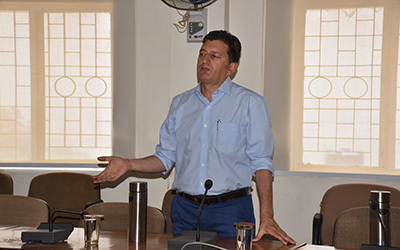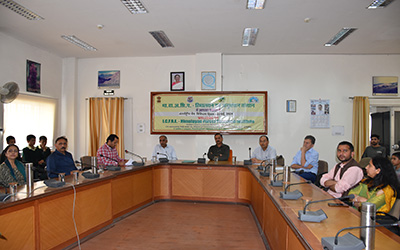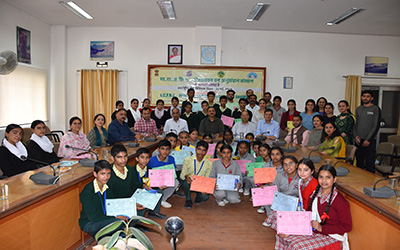Every year we and our students Learn the Importance of Biodiversity on International Day for Biodiversity. But Who will bridle the main villains risking the biodiversity in Himalayan Region and in Bharat in general. More and More NGOs, More and more in workshops, seminar, conferences, legislation, but nothing in operation...
SHIMLA – Population growth, global warming, and uncontrolled tourism are putting the rich biodiversity of the Himalayan region at risk. We are a number one in world as far as population is concerned.
Global warming is a cliche now. Mass and uncontrolled tourism is relatively a new villain, but it is a harbinger of both trash and cash for locals in the Himalayan region.
This was the urgent message delivered to students from three Shimla schools on the International Day for Biodiversity 2024 by experts at the Himalayan Forest Research Institute.
Dr. Vaneet Jishtu, a field botanist at the institute, painted a grim picture of the impact of human activities on biodiversity, particularly in the Himalayan region.
He warned that if global temperatures rise by just 2°C, over 90% of coral reefs, crucial to biodiversity, will vanish.
He highlighted the drastic changes over the years, noting that species like Lilium polyphyllum and certain orchids, once common in Shimla’s pine forests, have now disappeared.
Dr. Sandeep Sharma, Director of the institute, emphasized the importance of preserving the biodiversity hotspot that is the Indian Himalayan region, home to 18,940 plant species and over 30,000 wildlife species.
He stressed that everyone, including school children, should contribute to conservation efforts.
To mark the day, themed "Be a part of the scheme," the institute organized essay writing, slogan writing, and painting/poster-making competitions.
Dr. Joginder Singh Chauhan, the program coordinator, informed the students about the Mission LiFE themes, urging them to avoid single-use plastics and to plant trees.
Bur a real thing remains: Will we be able to reverse the negative trends that are spelling doom for our biodiversity?
When the global temperature will rise by 2 Degree Centigrade, given the present trend of global warming?
Can we reverse global warming and stop melting and depletion of glaciers? Can we bridle mass and crass tourism?
If answer to these questions is 'Yes', then how, when and who can do it. The scientists need to put strategy in place. Government agencies need to implement them.
If answer is 'No' then what we need to do. Scientists need to answer all these "Yes and Nos".

Dr. Jagdish Singh, Division Head Extension, explained that the United Nations designated May 22 as the International Day for Biological Diversity to raise awareness about these critical issues.
The event concluded with the Director distributing prizes to competition winners, including Divyansh Kashyap for essay writing, Gunjan Thakur for slogan writing, and Sneha for painting/poster making.
The enthusiastic participation of the students and the impactful messages from the speakers underscored the vital role of education and community involvement in biodiversity conservation.










